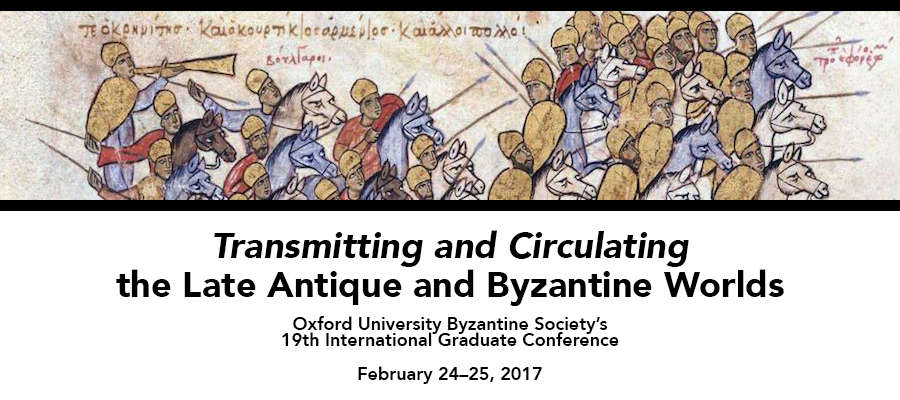Transmitting and Circulating the Late Antique and Byzantine Worlds, Oxford University Byzantine Society’s 19th International Graduate Conference, February 24–25, 2017
Movement was the norm rather than the exception in the Late Antique and Byzantine worlds. Things travelled: ideas, religions, foods, materials, money, people. Whether it was a Christian bishop sent to convert the North Caucuses, a coin which found its way to Anglo-Saxon England, or a piece of column which only made its way down a local road, how scholars engage with and taxonomise this constant flux has been key to the way in which we conceptualise the Late Antique and Byzantine worlds.
Since Dmitry Obolensky’s seminal 1971, The Byzantine Commonwealth, 500-1453, Byzantium or the Medieval East Roman Empire, has largely been viewed as the centre from which ideas, money, and things were transmitted outwards, and its commonwealth the space in which they circulated. This conference will offer a platform for interdisciplinary discussion on how far this perspective shapes modern scholarly debate, and in what other ways we can begin to reconceptualise transmission and circulation in the Late Antique and Byzantine worlds.
Postgraduate scholars are encouraged to engage with and problematise the concepts of transmission and circulation, as well as to offer specific case studies of these phenomena surging or declining at any particular time. Papers might address any of the following, but all contributions, especially those engaging with the so-called ‘peripheries’, whether Eastern, Western, Southern or Northern, of the Late Antique and Byzantine worlds are strongly encouraged.
- Circulation of coinage, luxury and sustenance goods, slaves – where from, where to and why?
- Transmission of political ideologies, structures of legitimacy, ceremony and bureaucracy – when is transmission adoption and when is it appropriation?
- The use and re-use of material objects, large and small, locally, regionally and more widely
- Missions of Christian (and other) conversions and the transportation of religious ideas
- Migrations, invasions and settlements – how did people and their ethnic identities move?
- Transmission of knowledge: teaching and education and techniques thereof – could and did ideas circulate without movement of people?
- The consolidation and circulation of texts, genres norms, and registers of speech and writing
- How did horizontal transmission (from Constantinople to Baghdad) differ from vertical transmission (from the emperor to the farmer)
- Circulation below elite level of persons, commodities, texts, etc. – the piecemeal (and potentially subversive) components of any ‘commonwealth’
